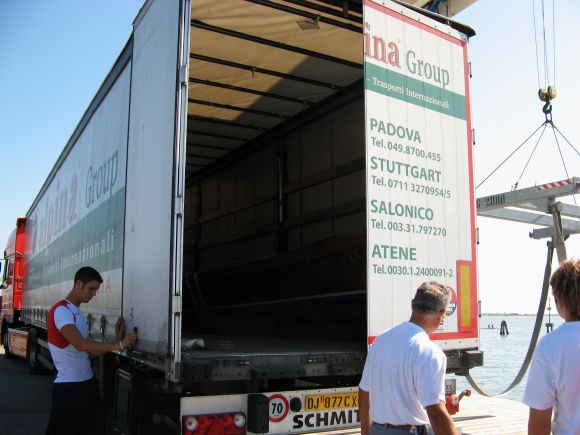
A few readers have asked how the Venetian boats travel to and from these foreign locations I keep jaunting off to.
In three words: Trucks, cranes, and Olindo.
In my first expedition with a traveling gondola, however, which we had taken to the lake of Bolsena for a big festival, we had the truck and Olindo, but no crane. I don’t remember how we got the boat into the water, but a whole bunch of us had to turn to in order to get the gondola back up into the truck by hand. When I saw what we were about to do (it was early in my shipping life), I thought it was impossible. When I think back on it, it still seems impossible. And yet, we did it.
I should mention that there were about ten of us per side. Maybe more. And at least two people — Olindo and Lino — understood the geometry and physics of the operation, so we weren’t relying solely on brute strength.
Obviously, picking boats up and pushing them around by hand is not ideal — for the boat, I mean, the heck with us. There are always plenty of XY-chromosome people hovering nearby, eager to show how strong they are. But we had no choice.
So the plan is simple. You row or tow your boat to Punta San Giuliano, on the edge of the lagoon where the bridge touches land.
Because there are three boat clubs there, there are also three cranes, of which I have only ever used the biggest. And the trucks will arrive, often driven by foreign nationals, often from somewhere in the Balkans. These drivers communicate by means of international truck-language, which is based on an assortment of gestures and shouts.
And there will be Olindo. He is the magus of boat transport, the scion of Chiarentin Trasporti, founded by his father in 1922 when boats still FAR outnumbered motorized vehicles. And because his father’s blood was condensed and consumed by hauling boats up the Brenta river by means of his own arms (until he could afford a horse), Olindo has inherited a mystic capacity of knowing exactly how to handle any sort of boat — positioned, braced, lashed, counterpoised, and otherwise settled for a long truck ride in such a way as to come out looking better than when it left. Or certainly not worse.
Some people understand animals, some people even claim to understand women. Olindo understands boats. The boat has yet to be born so big, delicate, or valuable that can ruffle him in any way. Usually it’s the amateurs who are trying to HELP that drive him over his recommended personal rpm’s.
So sending the boats to Orleans was pretty routine. The only thing that was different from other trips was the size of the crane brought in by the city to pluck many of the boats from the Loire and send them home. Its hydraulic arm could have been measured in football-field-lengths, and it could lift a maximum of 25 tons. I thought the Diesona was big; the crane thought it was a splinter.
The only living thing I know that could match that crane for strength, inch for pound for atmospheres, would be Olindo, actually. If they ever made him hydraulic, we wouldn’t need Archimedes’ proverbial fulcrum and level — he could move the world by himself.
Too bad there wouldn’t be a truck big enough to hold it. Though the shouts and gestures would probably be the same.
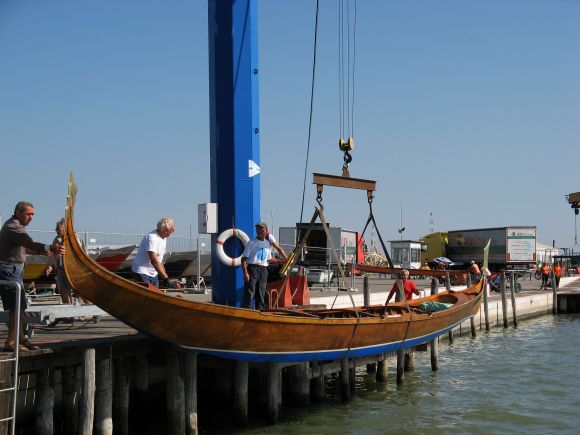
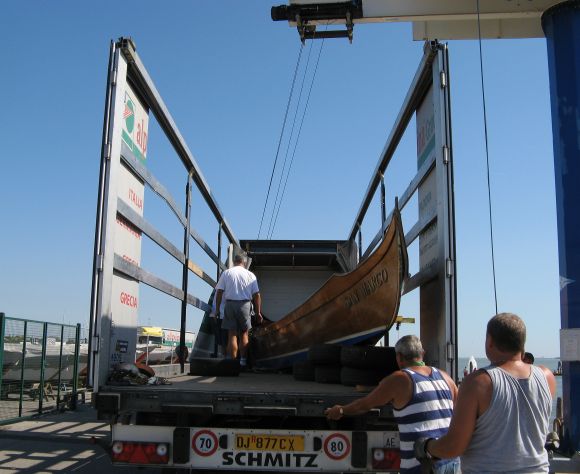
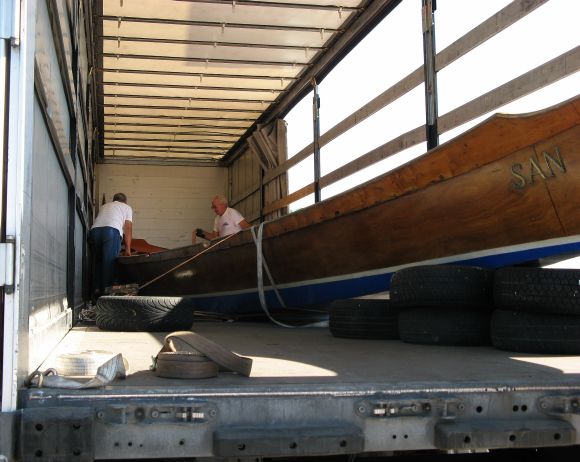
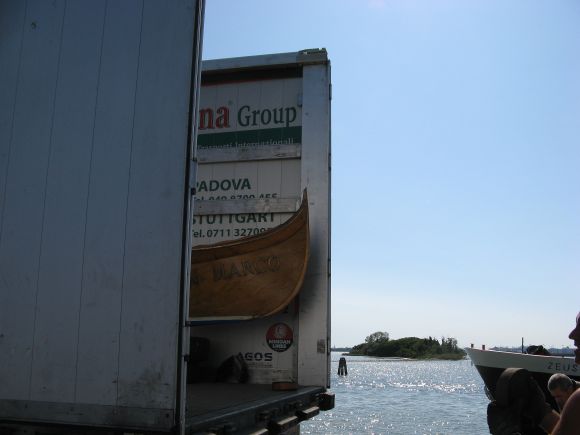
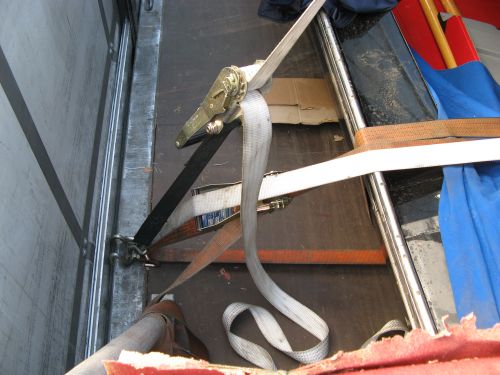
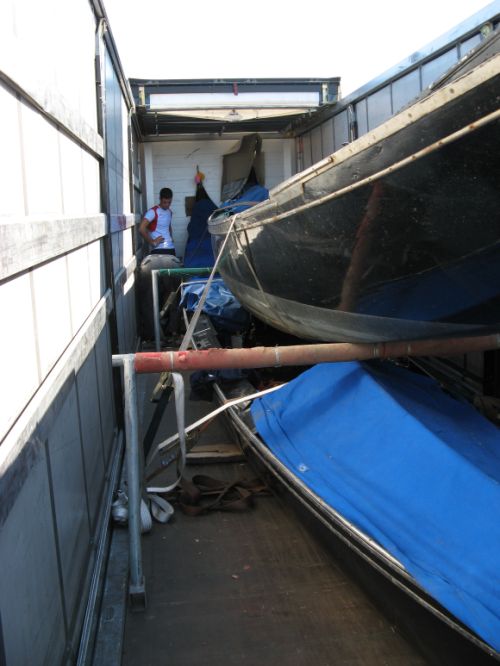
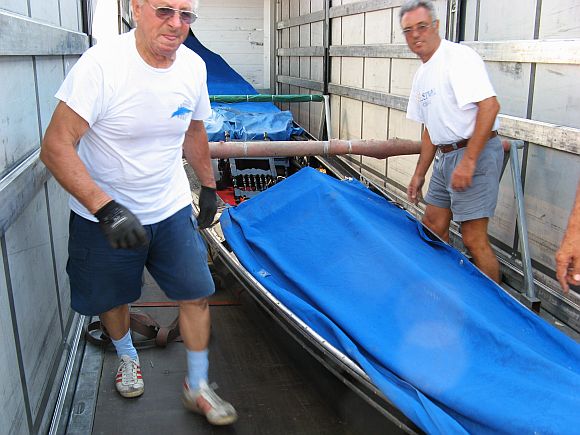

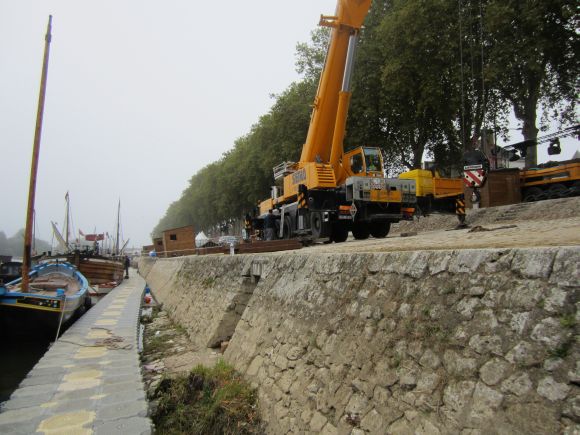
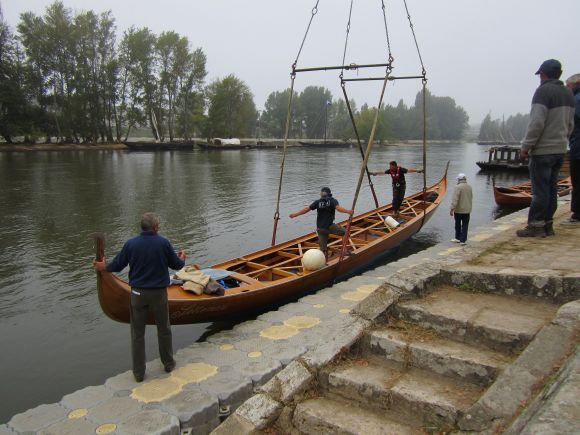


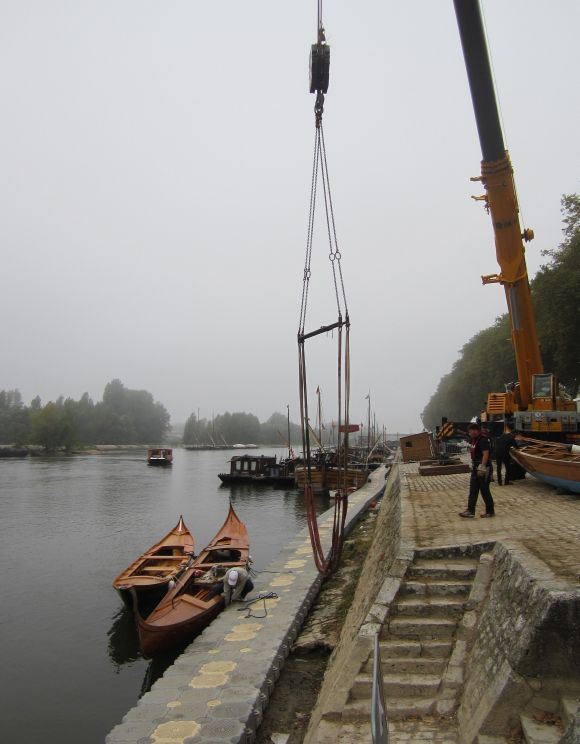
2 Comments
What a massive undertaking!!
Does Orlindo participate in the adventures, does he go to France, etc…. or is his adventure the pre-trip loading??
So woanderful seeing the inside workings of these projects!!
Thanx Erla!!
He has come with us on several expeditions, which has been excellent, since he also rows and at the time had his own gondola. But he can’t manage it every time. Too much work (nice problem to have, but that’s what happens when you’re the best).